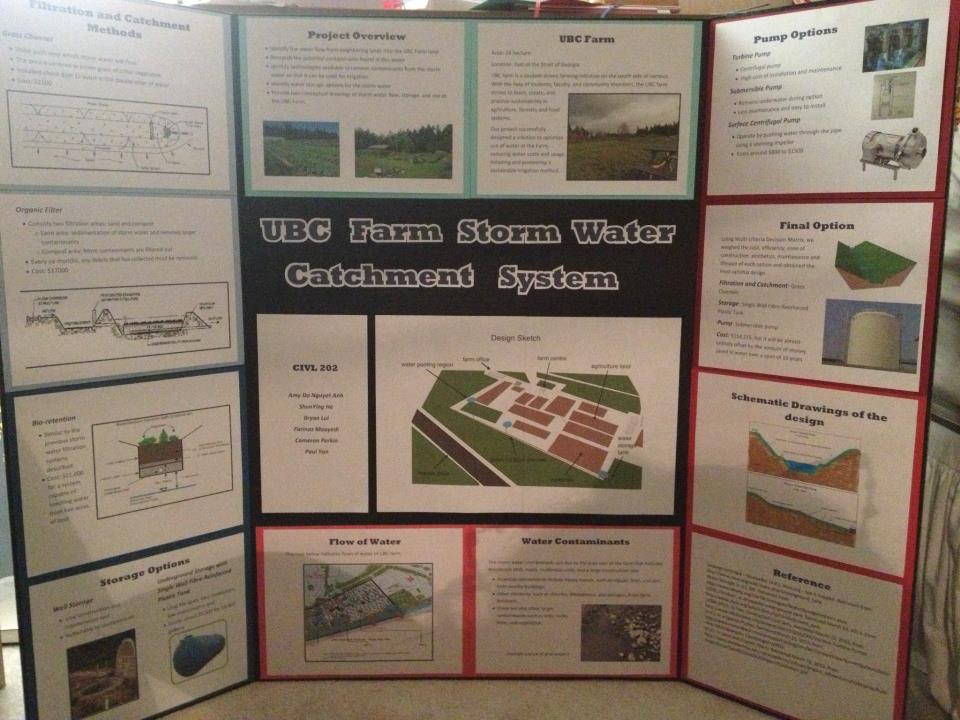Our storm water catchment project achieved the following goals
– investigated the topography and water flow at the farm
– researched potential contaminants that can pollute the water in the area and make it harmful for irrigation
– researched potential filter options to eliminate these toxins
– designed a system of collecting, filtering and storing storm water
– performed costing analysis and multi-criteria decision matrix to choose the best option within our findings that achieve the constraints of the water system design.
Three days before we expected to finish the project, however, we received an email from our client mentioning an extra task of the project that we had not considered. This aspect is the pumping system to transport water from the tank to irrigate the entire farm. We were able to research and add this into our project successfully before our pre-determined deadline.
Through the project, we did not have a lot of interaction with the community as we had expected. The majority of the project is based on research and design, with all the topography information found online. In addition, since our project is only the planning stage and not the construction stage, we are not able to feel directly the impacts of this project on the UBC Farm community. However, we hope that, should this project be implemented in the future, UBC Farm and the surrounding community will be able to save water and appreciate the efforts of creating more sustainable water solutions in practice. We hope that we have contributed to the works of many other on-campus organizations (such as UBC Sustainability) to promoting a movement of thinking and acting greener and environmentally responsible.
This project helped us learn the importance of project timing and organization, especially in the event of a last minute emergency, and communication between team members. We communicated particularly well through the use of facebook, dropbox and google docs, all of which were utilized in passing information to members who missed a group meeting, and allowed us to share information effectively and instantly. We learnt the more about our project’s context and understand our client’s need for a system that allows them to save irrigation water, especially given the sustainable goals of UBC Farm. We also planned our project in a logical and realistic way (given the amount of work we have in other courses) and was able to accommodate changes.
Our completed poster.

